I had some guesses on last week’s puzzler, identifying this silhouette as either a cormorant or an anhinga.
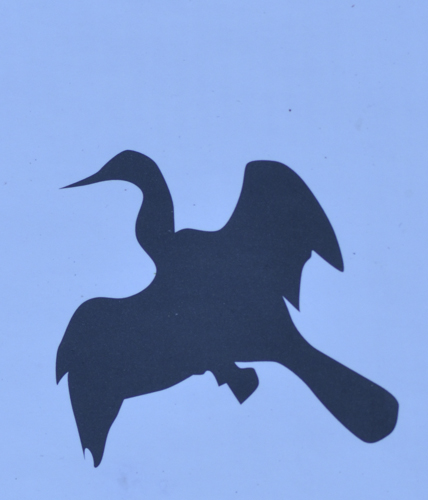
Both birds can be found in similar habits so it is easy to see how they could be mistaken for each other. But the key was in three things–the long bill with no hook at the end of it, the full-fan of tail feathers, and the fact that I told you it was sometimes called a “snake bird.” These facts make it an anhinga.
Here are a few photos to show the differences:
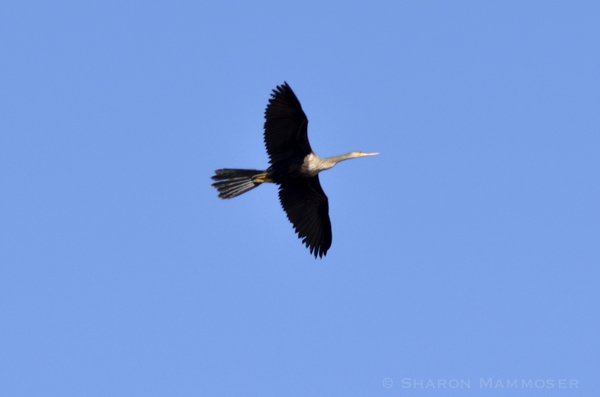
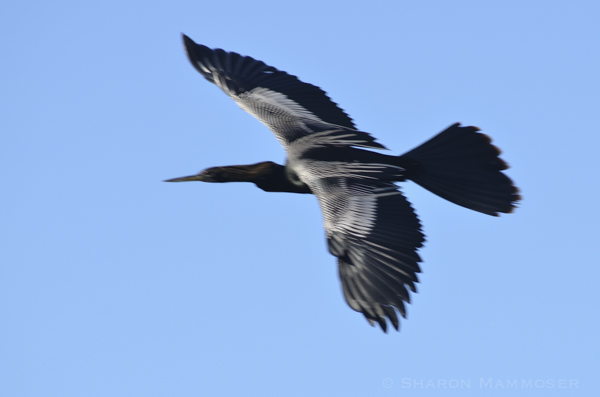
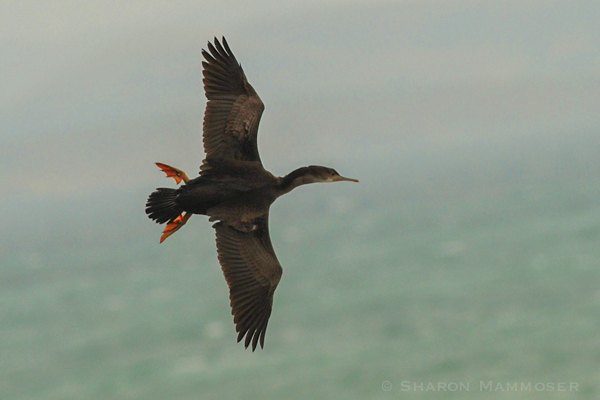
Also, check out the bill. Cormorants have a sharp hook at the end, whereas the bill of an anhinga is just long and narrow.
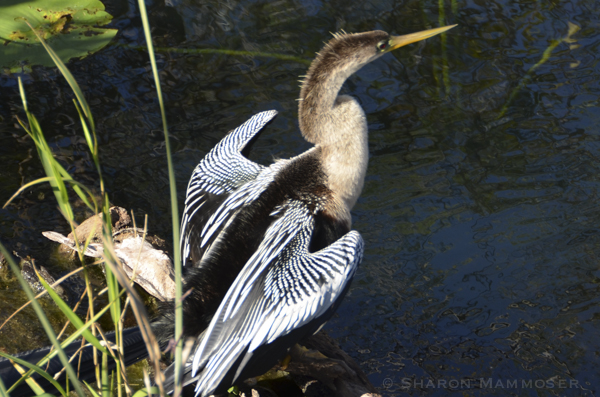
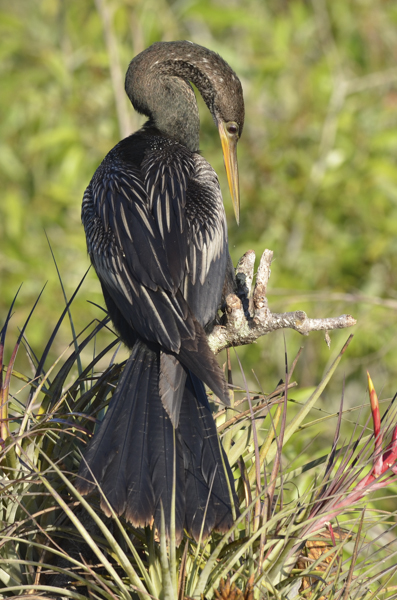
Now look at the bill of the cormorant, notice the sharp tip at the end.
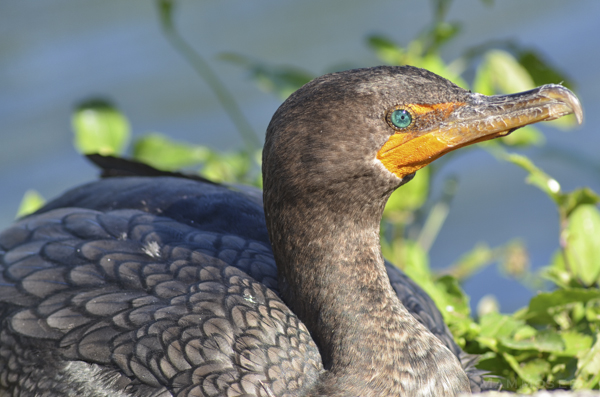
Anhingas have many nicknames including water turkey, snake bird, darters, water crows, and American darters. Check out this photo below to see why it is called the snake bird.
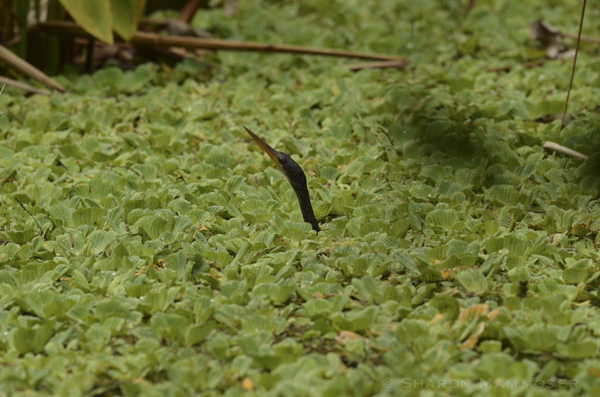
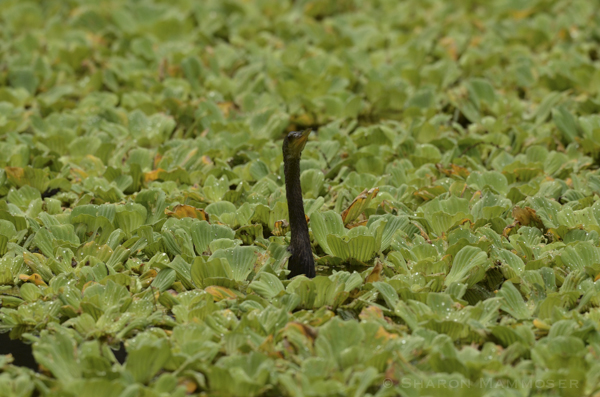
Anhingas often travel in the water with just their long neck and head above water so when you see one, it looks at first glance like a water snake.
Years ago when I was in Florida I witnessed several times an anhinga with a large fish. While holding the fish in its mouth, it would repeatedly whack it against a tree or bang it on the hard paved ground. Do you know why it does this? I learned the reason is to get rid of the barbs from the catfish so it can be swallowed without harming the bird. Amazing right? Birds are amazing.
Here are some photos of anhingas banging a catfish on the pavement or tree.
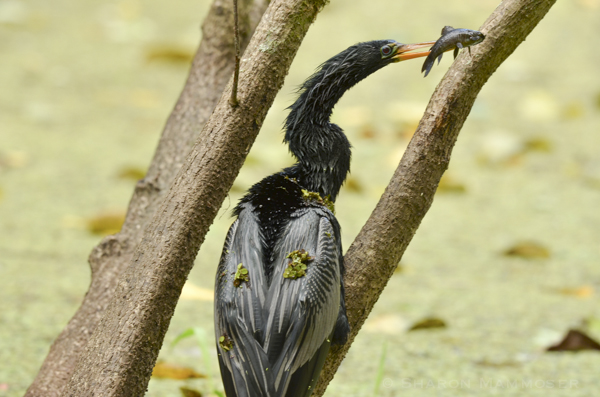
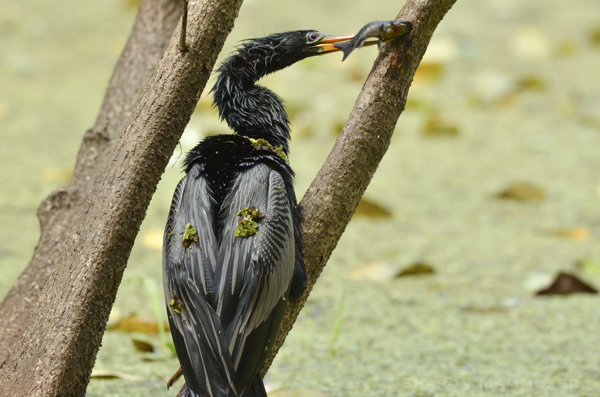
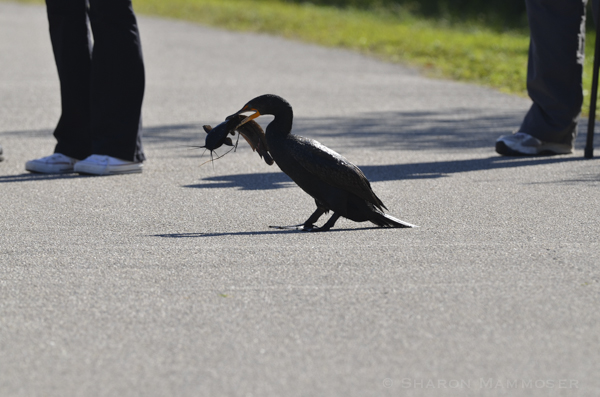
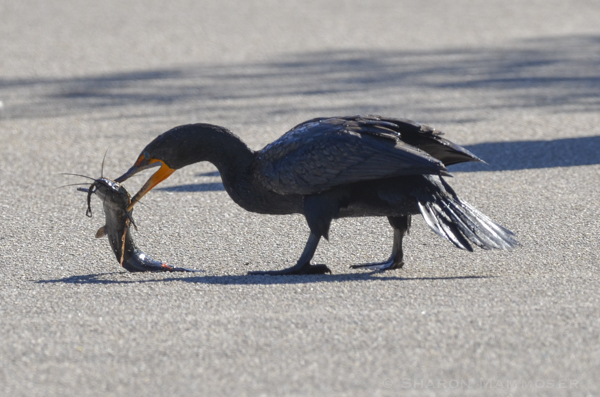
In this next photo, you can easily see why this bird is sometimes called the water turkey. Its tail looks just like a turkey tail!
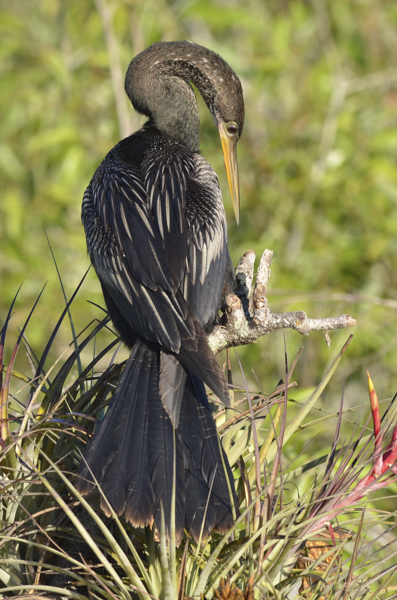
Here is a turkey–look at its tail–looks similar to an anhinga tail, right?
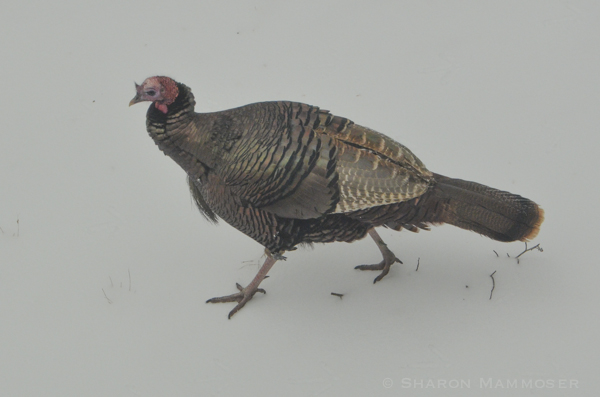
Check out the feet of an anhinga–it is easy to see why they are such good swimmers, able to chase fast fish with their daggerlike bills.
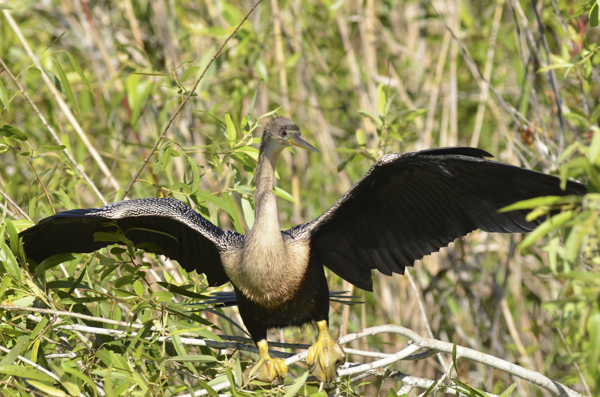
And lastly, I bet you’ve seen this bird in its regal pose, wings outstretched. It does this to dry its waterlogged feathers. Both cormorants and anhingas have no oil glands to waterproof their feathers so can often be seen with their wings open, sunning themselves.
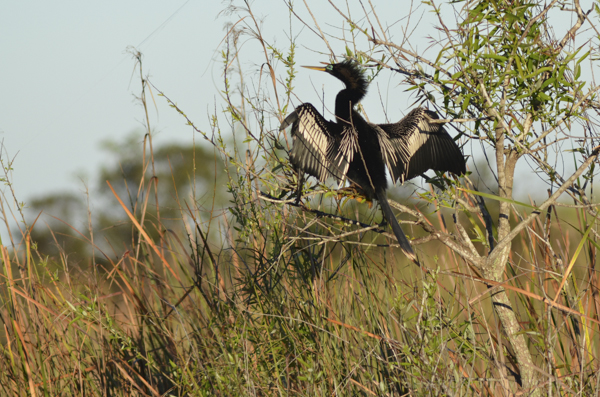
Now, next time you see an anhinga, you will know what it is!
Here is the next puzzler–another bird you would see in Florida.

